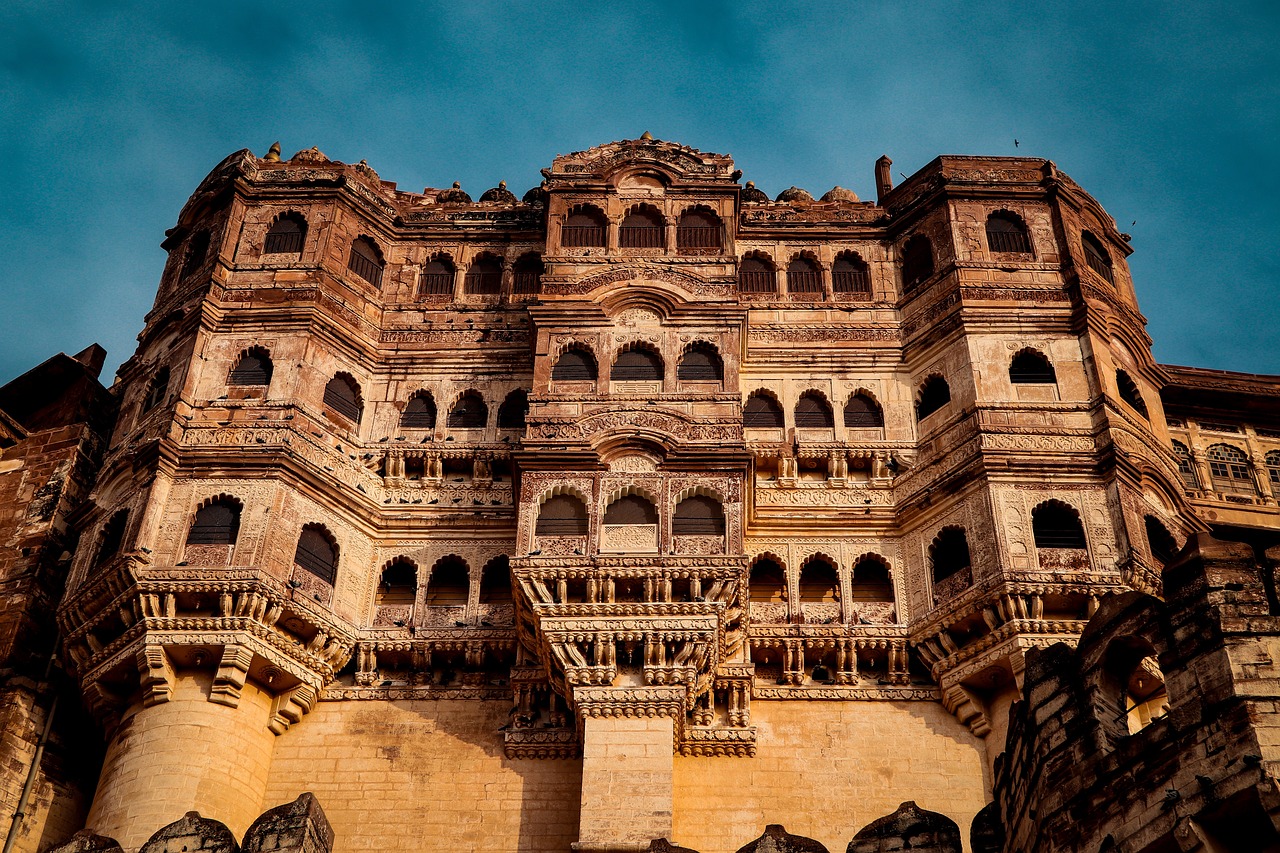Feature by Drishti Baheti
The Mehrangarh Fort is a historical monument located in the blue city of India, Jodhpur. Standing tall on a hill, it offers a panoramic view of the city.
The fort covers about 1,200 acres of land. This fort was built when Rao Jodha wanted to shift his capital from Mandore because the Fort of Mandore did not provide proper protection for all.

History
The fort was built by Rao Jodha, the founder of Jodhpur, in the 15th century. The construction of the fort began in 1459 and took several years to complete.
The fort has witnessed numerous battles and sieges throughout its history. It served as a formidable stronghold for the Rathore dynasty, protecting them from invasions and providing a haven during times of conflict.
Over the centuries, Mehrangarh Fort has been expanded and renovated by successive rulers. The fort’s walls, which encircle the complex, were reinforced and extended.
At present, the fort is under the control of Maharaja Gaj Singh Ji. He is the 39th ruler of the Rathore Dynasty of Jodhpur.
The Architecture
The architecture of the Mehrangarh fort is a testament to the ingenuity and craftsmanship of the Rajput Rulers. The fort is built on a rock about 112m higher than the surrounding plains with red sandstone.
The fort has 7 gates, each depicting an important event in the history of the Rathore Dynasty. The 7 gates are:
· Jai Pol: It was built by Maharaja Man Singh in 1806 to celebrate his victory over Jaipur and Bikaner.
· Fateh Pol: It was built by Ajit Singh in 1707 to remember the taking back of the fort from the Mughals
· Gopal Pol: It is after Fateh Pol.
· Dedh Kangra Pol or Lakhna Pol: It bears the scars of bombardment by cannonballs;
· Amruti Pol: It is between the Dedh Kangra Pol and Loha Pol.
· Loha Pol: It is the final gate into the main part of the fort complex.
· Suraj Pol: It is the innermost gate that provides access to the palace complex and Daulat Khana Chauk.
The fort consists of many more features like the Moti Mahal (Pearl Palace), Phool Mahal (Flower Palace), and Sheesh Mahal (Mirror Palace).
Moti Mahal
The walls of the palace are adorned with gold leaf paintings, which depict scenes from mythology, royal hunts, and battles. The artwork showcases the skill and craftsmanship of the artisans of that dynasty. The ceilings of the Moti Mahal are embellished with delicate mirror work, creating a mesmerizing effect as light falls across the surfaces. The mirrors reflect and increase the beauty of the surroundings.
Phool Mahal
The palace’s walls are adorned with fine paintings, golden hues, and stunning glasswork. This palace once served as a venue for extravagant celebrations, immersing visitors in the grandeur of the royal lifestyle.
Sheesh Mahal
The Palace is a mesmerizing architectural gem. The walls of the palace are adorned with countless pieces of mirror, creating a spectacle of reflections and shimmering light. The Palace served as a private room for the royal women.
Chamunda Devi Temple

The Marwars have been worshiping The Chamunda Mataji temple in Mehrangarh Fort, Jodhpur. It was established in 1460 after the idol of the goddess Chamunda — the Kuladevi was moved from the old capital of Mandore by the ruler. This goddess is still worshiped by the royal family of Jodhpur and other citizens of the city. The temple witnesses’ festivities like Gangaur and Dusshera. During the famous festival of Jodhpur, Gangaur the idol of Gangaur Mata made of pure silver is brought from this temple.
Jaswanthada

Jaswanthada is a cenotaph situated about a kilometer far from the fort. It is within the boundaries of the fort. It was built by Maharaja Sardar Singh in the memory of his father Maharaja Jaswant Singh in 1899.It also serves as a cremation ground for the Rajput family of Marwar. The structure is made of Makrana Marble. It has a small lake at its entrance and is surrounded by beautiful landscaping
The Conservation of the Fort
The Mehrangarh Museum Trust, established in 1972, has played an important role in the ongoing conservation and restoration work. The trust has implemented many restoration projects, including structural repairs, preservation of artworks, and the maintenance of the fort’s infrastructure. Additionally, the fort has implemented sustainable tourism practices to minimize the impact on its delicate environment.
Today, Meherangarh Fort is one of the most popular tourist destinations, showcasing the grandeur of Rajasthan’s architectural and cultural legacy.
Images: All images except the featured image are by Drishti Baheti. Featured image from Pixabay.

